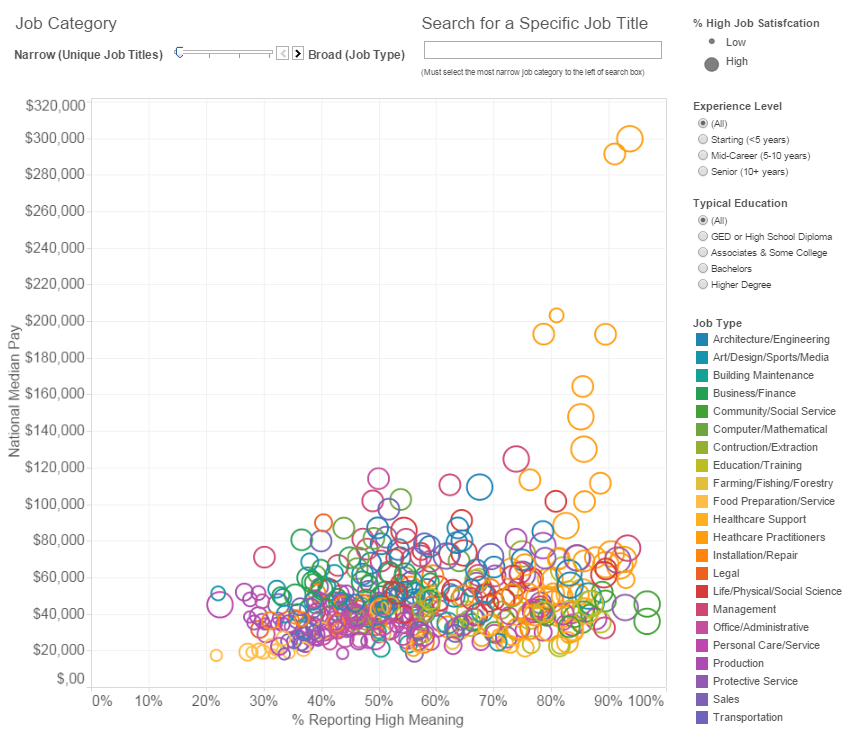
Last week I wrote about how much easier it is for people with above-average incomes to retire early. For people with low-to-average incomes, it takes significantly longer.
After optimizing expenses as best as possible, it makes sense to also chase higher incomes, particularly for those that don’t already make a killing as it is.
Here’s the thing though, it’s not all about money and escaping the rat race. Money is simply a means to an end, not an end in-and-of itself.
Some people LOVE the rat race. For these people, work might be more like a joyful daily stroll through Candyland. And as long as work is fairly secure for the long-run, it doesn’t make much sense for the Candyland crowd to sacrifice on spending so they can retire early. They might as well keep doing what they love.

For those of us that aren’t as deluded, I mean, fortunate, however, the sacrifices required to retire early pale in comparison to the rewards. With this group of people in mind (the people that aren’t head-over-heels in love with their job), and with supreme respect for society’s less-fortunate that might find it difficult to make changes amidst structural and situational impediments, here are a few ideas about how to find a more fulfilling and/or better paying job.
Imagining a more fulfilling and/or better-paying job
The methods described below are similar to those used by PhD’s in career coaching and decision-making, but that doesn’t mean they’re the best approach for everyone. With that being said, these general steps have helped me clarify important decisions in the past.

1. Figure out what you really want. Draft a list of the top 6 characteristics/goals for your ideal job/career (ex: pays well, flexible hours, not location-dependent, helps people, low barriers to entry, not sitting down all day, etc.). Brainstorm a number of possible jobs and assign scores (1-5) for each of your top 6 characteristics categories (these simple algorithms perform equally as well as some of the most complex statistical models). Add up the scores and see which jobs top the list.
2. Figure out what you’d actually be good at and enjoy doing. Take a few career quizzes. I really like pymetrics, a quiz based on neuroscience games, although I can’t vouch for the effectiveness of the model (I mean, it is in beta still). But still, there are a few other links out there.
3. Find overlap and prioritize. Compare results from step 1 and 2, maybe even add some new results from step 2 to the scoring template in step 1. Prioritize the most promising jobs.
4. Make some moves. Take some steps such as talking to people in your ideal position, getting some training and/or education if necessary (there are a ton of free resources online), networking, taking some part-time weekend apprenticeships, or whatever the situation calls for. Keep in mind what kind of opportunity costs a career switch might involve.
Other resources
1. Budgets Are Sexy – Side Hustle Series: Ughh! How could I forget to mention the side hustle?! J Money has been running this side hustle series for a long time. This a solution in its own right that I haven’t given proper attention to in this post. The side hustle is a viable solution for people that like what they do but just want to make a little extra money. J tends to focus on non-traditional side hustles because, if it was traditional, you’d probably have already thought about it. Plus who doesn’t want to hear about what it is like to work as a phone-sex operator (ahem, I mean phone “actress”)?
2. Mr. Money Mustache – 50 Jobs Over $50,000 Without a Degree (Part 1) (Part 2): Some of these feel like a little bit of a stretch, but maybe I’m just a bad blogger 🙂 Still a good place to get some ideas, even just for a side-hustle.
3. Payscale – Interactive Chart: Most and Least Meaningful Jobs: This interactive chart is the bomb! You can filter by education requirement, required years of experience, and job type. It plots income on the vertical axis, job meaning on the horizontal axis and shows job satisfaction by bubble size. There are a handful of jobs missing, but it’s still easy to see general trends, such as the fact that life as a M.D. is pretty sweet or that it’s hard to find jobs that pay over $50,000 without at least some college experience. Here’s a screenshot:
Click image to go to interactive version.
In closing
If you’ve already got expenses optimized and are unhappy in a poorly compensated job, it definitely make sense to consider alternatives. Hopefully these resources will at least provide some food for thought. Don’t sell yourself short!
———————————————–
*Update: I forgot to mention that moving to a different city, like Minneapolis, or simply changing jobs can add a lot to the equation, potentially from both a money and fulfillment perspective. In fact, this article argues that changing jobs more frequently can result in 50% higher lifetime pay.
Also, for further information, Vox recently published a great piece called, The social science guide to picking a career you’ll love. Check it out.

